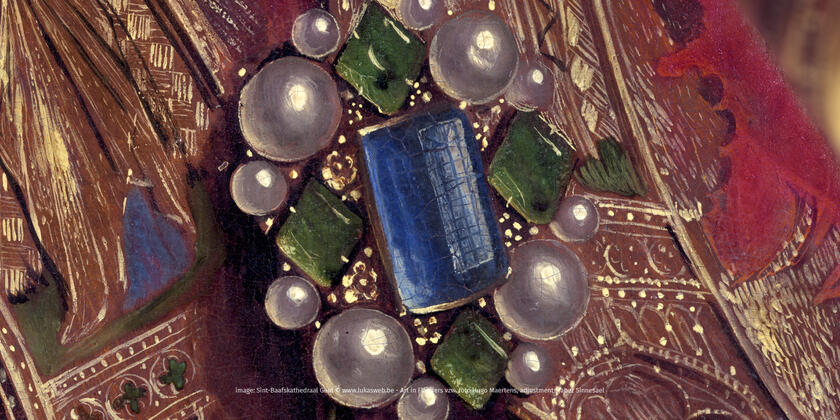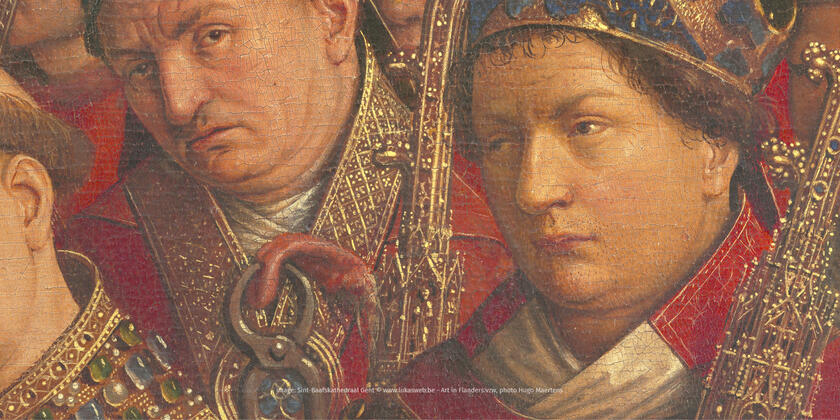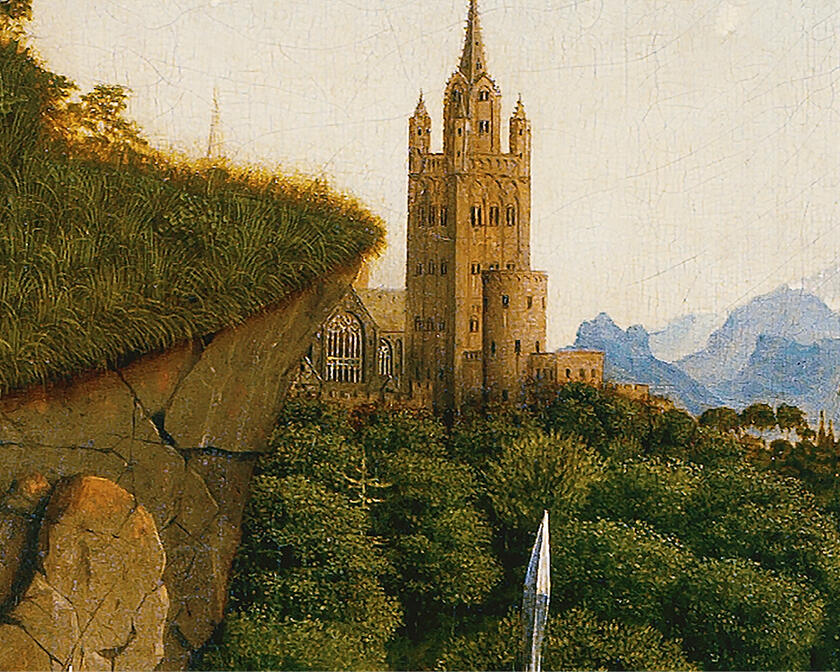
The central panel with the Adoration of the Mystic Lamb is teeming with botanical details. The wonderful garden depicted in this panel represents the heavenly paradise where the faithful go to after their death according to the Bible. It is therefore not surprising that a great deal of Christian symbolism underlies the fauna and flora. The panel is filled with evergreen plants, spring flowers and medicinal herbs that symbolise immortality, constant rejuvenation and the healing power of faith respectively.
Even the number of leaves the plants have is not random. For instance, the different types of clover depicted in the altarpiece are all trifoliate, which refers to the Holy Trinity. The lily of the valley or Our Lady's tears, on the other hand, was painted with seven leaves, which symbolises the Seven Sorrows and the Seven Joys of Mary.
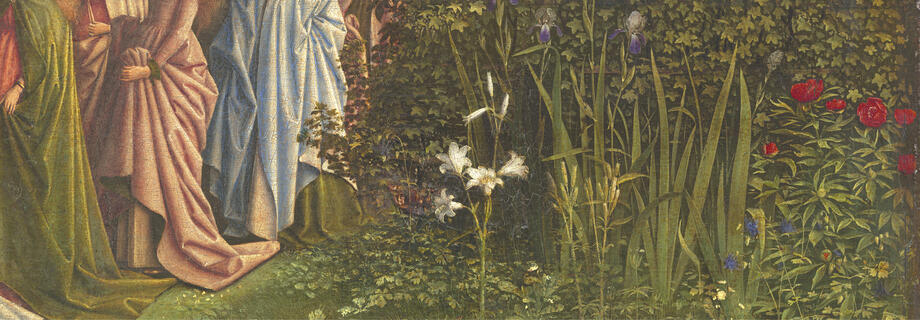
True to nature
Hubert and Jan Van Eyck painted with high precision and thus demonstrated their extensive scientific knowledge. They far exceeded their contemporaries, not just in technical terms, but also in terms of detail and accuracy. While most 15th-century painters either put unrealistic, overly stylised plants or a collection of flowery, meaningless dots on canvas, the Van Eyck brothers distinguished themselves by depicting crystal-clear, true-to-nature flowers, herbs and fruits. Thanks to this detailed depiction, scientists have succeeded in identifying as many as 75 different plant species, 48 of which with great certainty. The altarpiece thus provides us with a wealth of information about the plants that existed during the Middle Ages.
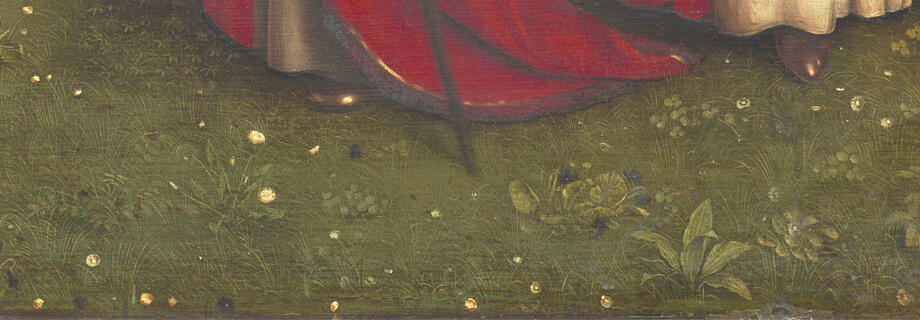
Different seasons and climes
Although the Van Eyck brothers depicted plants in the Ghent Altarpiece very realistically and true to nature, they did not strive for an exact rendering of reality. For instance, they did not observe the rules of the seasons. Spring flowers can be seen next to summer-flowering plants, and trees from northern climates alternate with shrubs that normally only grow in warmer regions. As a diplomate in the service of Philip the Good, Duke of Burgundy, Jan Van Eyck travelled abroad on several occasions. On these expeditions, he became acquainted with various new plants and flowers which undoubtedly were a source of inspiration for his heavenly garden in the Ghent Altarpiece.
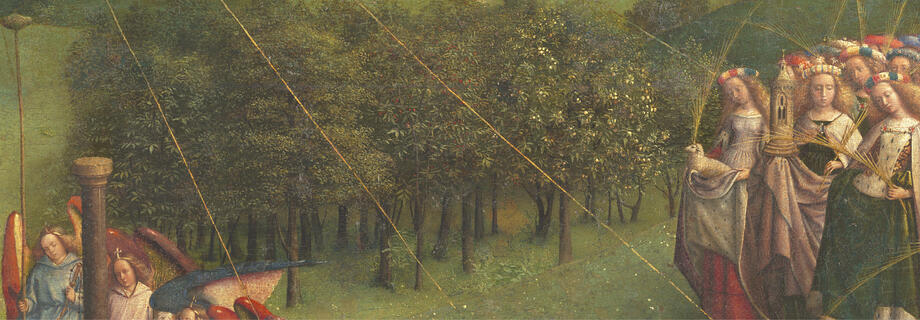
Citron
One of the exotic fruits which Van Eyck encountered on his diplomatic journeys was the citron. The citron or etrog in Hebrew is a citrus fruit from which the grapefruit, lemon and lime were developed through hybridisation. It used to be known as the forbidden fruit and therefore was of great symbolic meaning. Other exotic plant species such as the Mediterranean cypress, the date palm, the fig tree and the pomegranate are clearly distinguishable as well. Over a ten-month period in 1428 and 1429, Van Eyck stayed in Spain and Portugal where he had ample time to become acquainted with and closely study Mediterranean plants. This seems to be confirmed by research conducted by architectural historian John Hooper Harvey, who demonstrated that many species identified in the Ghent Altarpiece grew in the Iberian peninsula in the fifteenth century.
Incorporating exotic fruits he had encountered on his journeys or rock masses from his native region of Dinant, Jan Van Eyck took unrelated elements from the world around him and combined them into a single work of art that represented his worldview.
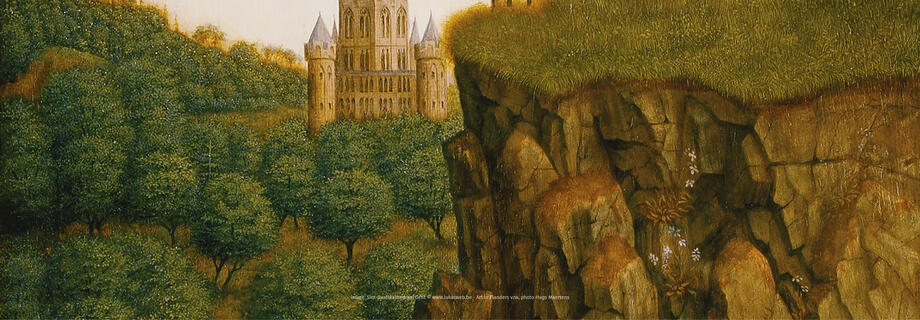
Origin of the panels
Thanks to dendrochronology, the scientific method of dating and identifying the geographical origin of wood by means of tree rings, we know where the wooden panels of the altarpiece originate from. Like in most Flemish works of art from the period between the fourteenth and seventeenth centuries, the panels were made from Baltic wood. Wood from trees cut in the forests of Estonia, Latvia and Lithuania was shipped via ports on the Baltic Sea to Western Europe by Dutch merchants.
Do you want to admire van Eyck’s heavenly garden yourself? Verdant Maaseikplein square enables you to experience paradise on earth as never before!
Van Eyck and the Ghent Altarpiece
Who was Jan Van Eyck, and what makes the Ghent Altarpiece so special? Discover more on these pages!
